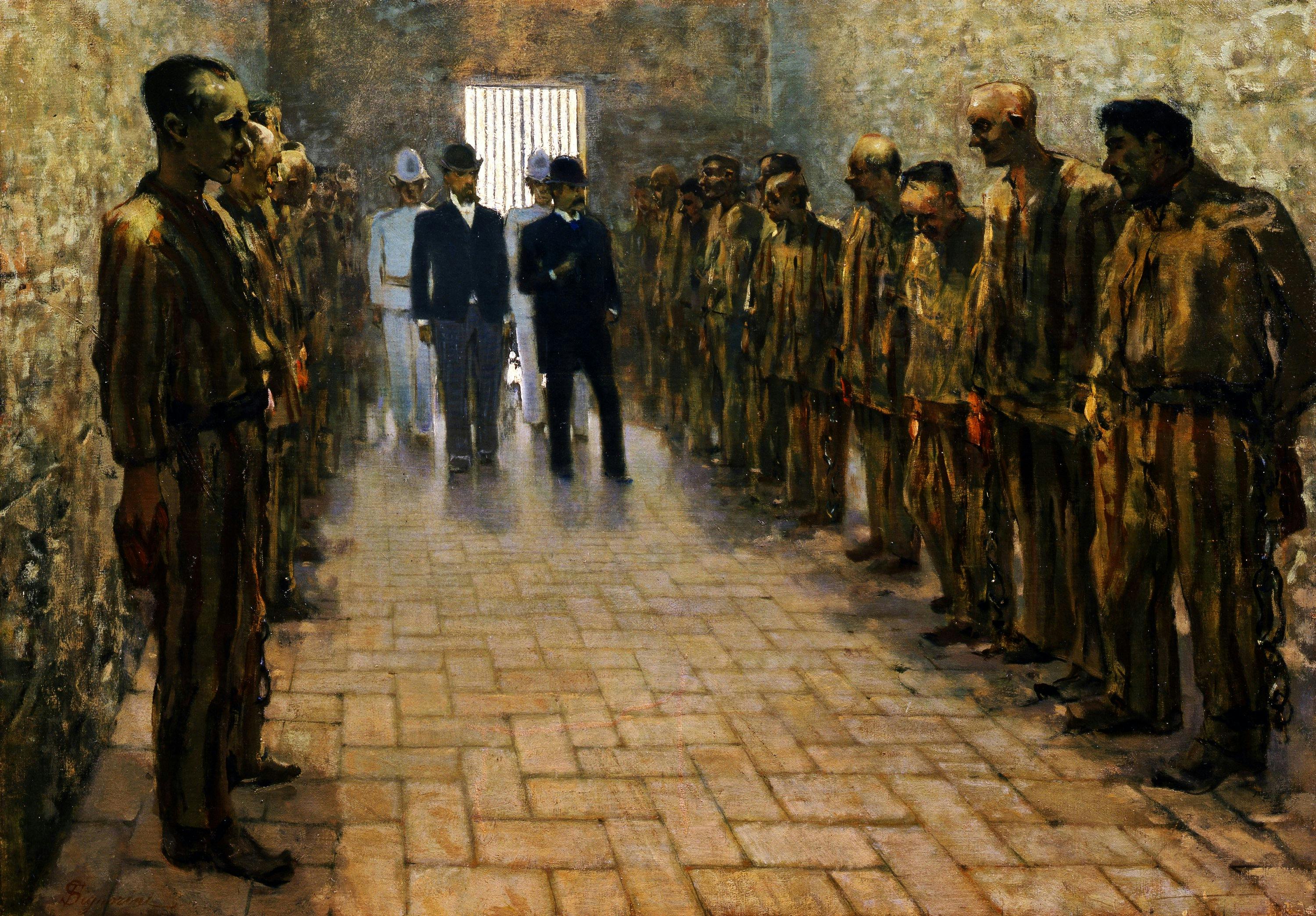Prison in Portoferraio
Telemaco Signorini (Florence 1835 - 1901)
Bottom left: “T. Signorini”
Telemaco Signorini was one of the leading members of the Macchiaioli, a revolutionary movement of painters in the mid-19th century. He painted Bagno penale a Portoferraio during a stay on the island of Elba, where he had the opportunity to visit the prison. The experience affected him deeply and the resulting painting is a dramatically realistic portrayal of prison life. The emaciated faces of the inmates are depicted in a series of dark colours that reflect the oppressive existence within the prison. The light is concentrated behind the inspectors, creating studied chiaroscuro effects throughout the scene.
In this period, the season of the Macchaioli school painting had concluded for some time, but Signorini’s visual language still included a synthetic form of painting, one that did not define shapes using drawing, but rather by bringing out volume through powerful contrasts of light and shade. This rapid form of painting, in areas of “macchie” [literally “patches” or “spots”] was combined by Signorini (a skilled engraver and draughtsman) through expert use of graphic image to emphasise selected parts of the scene (such as, in this case, the bricks on the floor, or some of the profiles). The calibrated structuring of the space is affected by the lessons of Florence’s 15th-century masters, and has been used here to stress the violent difference between the inspectors and officers in the background of the scene, and the prisoners, set out in a dramatic sequence, backs to the wall, and ready to be scrutinised by the hard stares of the inspectors. The crude nature of the subject draws on the naturalistic literature of Verga and Zola, but also on the debate around anarchic and socialist petitions that in the late 19th century, also involved artists and intellectuals.
